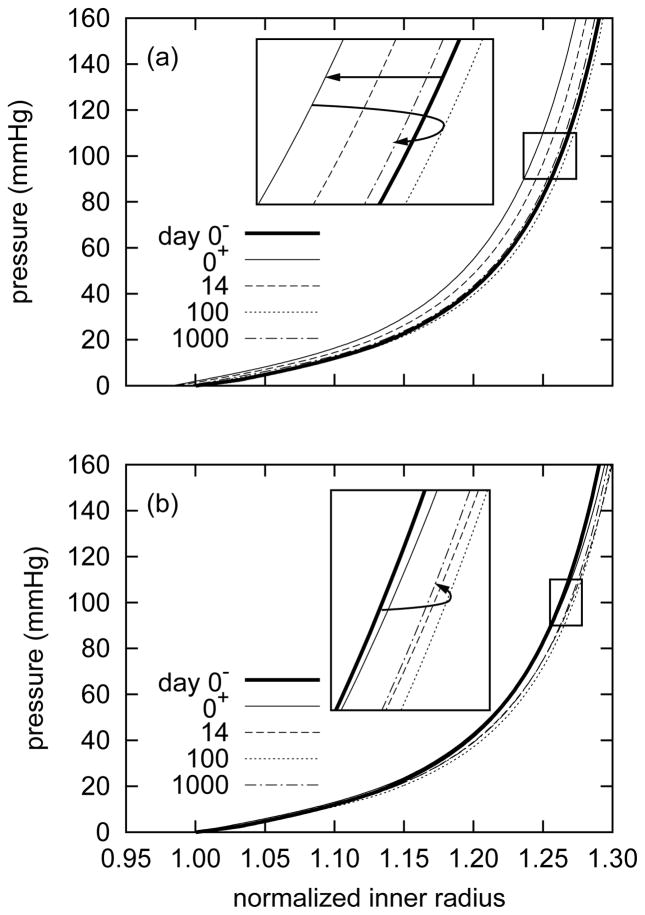Figure 4.
Evolving passive “pressure-diameter” responses due to G&R for a 5% step increase in in vivo axial length, where the abscissa ‘normalized inner radius’ is expressed as the ratio of the current deformed inner radii to the original unpressurized inner radius before elongation a(s)/A(0−) (panel a) or the current unpressurized inner radius a(s)/A(s) (panel b). Results are for the current in vivo axial length l = δ lh. The solid bold curve represents the response before the extension at time s = 0−. The light solid curve represents the response at the instant of the step increase in length at time s = 0+. Note the instantaneous leftward shift indicating a stiffer response as a consequence of coupled biaxial behavior and isochoric motion, followed by a gradual rightward shift as the artery remodeled towards its original compliance (inset, panel a). The model predicted some “overshoot” at day 100 followed by a slight reversal. Normalizing with respect to the current unpressurized configuration obscures the instantaneous effect of elongation and suggests that the artery became more compliant (inset, panel b). This result highlights the importance of choosing appropriate and consistent reference configurations, which affect substantially data interpretation.

